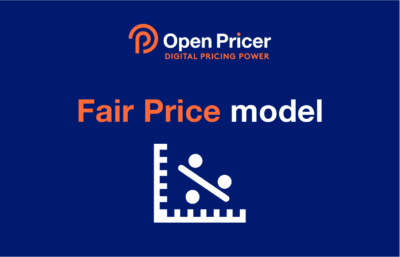
The parcel and postal industry is undergoing significant transformation. How carriers can adapt to the future of parcel and postal services? As highlighted in a recent CEP-Research article, industry leaders highlighted three key priorities for carriers at Leaders in Logistics: Summit 2025:
- Business model transformation – Moving beyond traditional mail to parcel logistics and integrated services.
- Modernizing pricing strategies – Leveraging pricing as a tool to optimize capacity and manage demand fluctuations.
- Enhancing customer experience – Shifting from a volume-based approach to a value-driven model.
Among these, pricing emerged as a crucial yet underutilized lever for profitability and efficiency.
The limits of static pricing in parcel logistics
Most parcel carriers still rely on static pricing models, based on average costs or incomplete competitor benchmarks, which are typically updated only once a year. This approach presents several limitations such as inflexibility, as pricing remains disconnected from real-time fluctuations in network conditions. The second limitation would be inefficient capacity utilization since static rates do not encourage shippers to balance volumes across peak and off-peak periods.
Parcel networks have unique characteristics that call for a more adaptive pricing approach:
- Fixed capacity – Transport, sorting, and delivery operations cannot be easily scaled in response to demand fluctuations.
- Demand variations – Seasonal peaks, weekly trends, and route imbalances create capacity constraints.
- Differences in willingness to pay – Some shipments are more time-sensitive and could command higher rates, while others are more price-sensitive and could benefit from incentives.
However, most carriers struggle to implement dynamic pricing due to limited visibility into real-time capacity utilization. Additionally, their IT systems are usually not designed for dynamic price adjustments. Last but not least, usual fixed-price contracts do not allow for flexible rate adaptation.
How dynamic pricing can drive profitability and efficiency
Modern pricing strategies, a more differentiated and dynamic approach to pricing can help carriers optimize revenue, balance capacity, and improve operational efficiency.
1. Leveraging Fair Price intelligence
Fair Price intelligence enables carriers to identify customers who may be at risk of churn due to pricing misalignment. Carriers can pinpoint opportunities to adjust pricing strategically—whether by lowering rates to retain price-sensitive customers or increasing rates where there is room to improve margins. Implementing this approach can unlock an additional 5-15% in net margin, helping carriers better their revenue without compromising customer relationships.
Fair Price intelligence also provides data-backed insights that help sales teams determine the optimal price for each customer, balancing competitiveness with profitability. Hence, carriers can ensure more consistent, profitable pricing decisions. Learn more on the Open Pricer’s Fair Price Model here.
2. Targeted incentives
By offering time-limited discounts, carriers can redirect volumes to off-peak periods or less congested routes. For example: a 40% discount for shipments to specific destinations during the summer months. Accompanied by a 20% discount on Mondays and Thursdays to balance weekly demand patterns.
These targeted offers can be designed for different customer segments, such as B2C retailers, large B2B customers, or SMEs, ensuring a tailored approach to demand management.
3. New contractual conditions
To encourage more balanced volume distribution, carriers can introduce conditional discounts. For instance, a customer could access preferential rates only if they generate a minimum revenue threshold at standard rates. Incentives could be applied only to shipments made on off-peak days, reducing pressure on high-demand periods.
4. Surge pricing and rate calendars
Carriers can implement dynamic surcharges for deliveries in congested areas or during peak seasons. This approach helps:
- Reduce excessive strain on capacity during peak periods.
- Encourage shippers to plan shipments during lower-demand windows.
- Improve network efficiency by optimizing asset utilization
A win-win strategy for carriers and shippers
By adopting a more flexible and data-driven pricing approach, carriers can:
- Maximize revenue without resorting to generalized rate increases.
- Improve network efficiency by smoothing demand fluctuations.
- Enhance customer relationships by offering tailored pricing solutions.
- Reduce environmental impact by optimizing existing transport capacity rather than adding new vehicles.
With modern pricing technologies, these strategies can be seamlessly integrated into existing pricing models and customer contracts, providing immediate and long-term benefits.
The shift toward dynamic and strategic pricing is no longer optional—it is a necessity for ensuring profitability and sustainability in the evolving parcel industry.
Learn more on Dynamic Pricing.
Contact us to learn more about the benefits of price optimization for your business.


